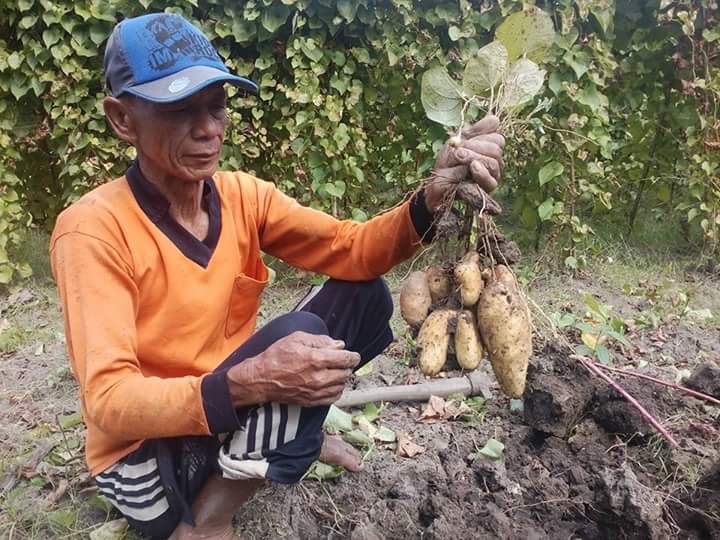
On a sunny morning I traveled to Uncle's house in Bireuen, North Aceh. Uncle last week advised me today to visit his house to help him harvest sweet potatoes.
And I finally helped my uncle harvest sweet potatoes in his field and this is something worth sharing for me in steemit hali.
To start this post I say @sirknight to prakash on blog #calestialchallenge and today I will discuss about agriculture discussing about sweet potato.
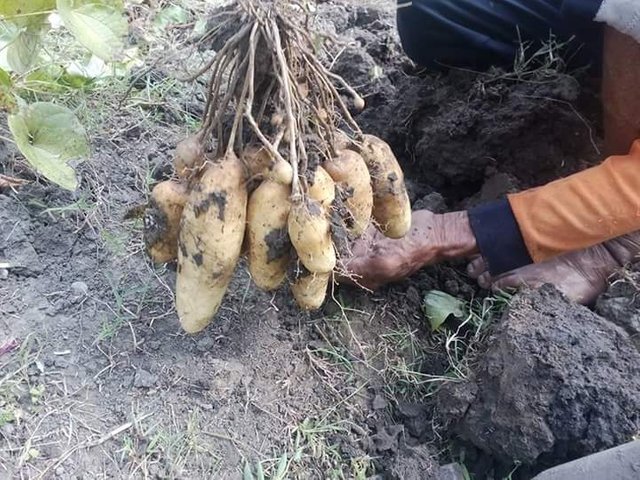
There are three types of sweet potato (Ipomoea batatas L.) that are popularly cultivated in Indonesia, namely sweet brownish sweet potato, red and purple. The three types of sweet potatoes have superior varieties with high productivity. Some popular sweet potato varieties include cilembu, ibaraki, lampeneng, georgia, borobudur, prambanan, mendut, and kalasan.
Sweet potato cultivation is suitable in hot and humid tropics. The ideal temperature for this plant is 21-27oC with rainfall of 750-1500 mm per year. Sweet potato cultivation requires sun exposure about 11-12 hours a day.
In Indonesia, sweet potato cultivation achieves its most optimal productivity when planted in the lowlands to a height of 500 meters from sea level. However, this plant can still grow well at altitudes above 1000 meters, only the term of planting until the harvest becomes longer.
Preparing sweet potato seeds
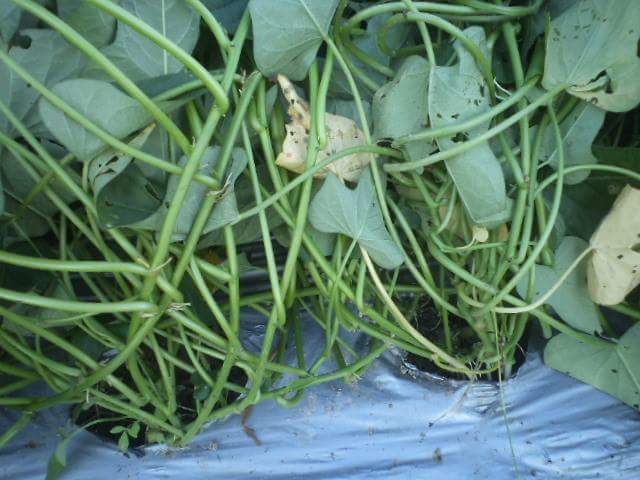
Preparation of seeds in the cultivation of sweet potatoes can be done in two ways, namely the generative and vegetative way. First is multiplication through tubers. The trick select the tubers of good quality and healthy, then left in a humid and shady place out of the shoots.
Shoots that come out of the tubers are cut and ready to be raised. Generative ways are rarely done in large scale sweet potato cultivation. This method is used to multiply superior seeds on a limited scale. Or to restore the superior properties of the mother.
The second way is vegetative propagation with the dist. The breeder is taken from a plant that is over two months old with a short segment. Way, cut the stem of the plant approximately 15-25 cm long. On each piece there are at least two stems. Papas some leaves to reduce evaporation. Tie the stem that has been distilled and leave for one week in the shade.
Propagation by means of stem cuttings will continuously decrease the quality of the plant. Therefore, propagation by cuttings is only recommended for 3-5 generations of planting.
Soil processing for sweet potato cultivation
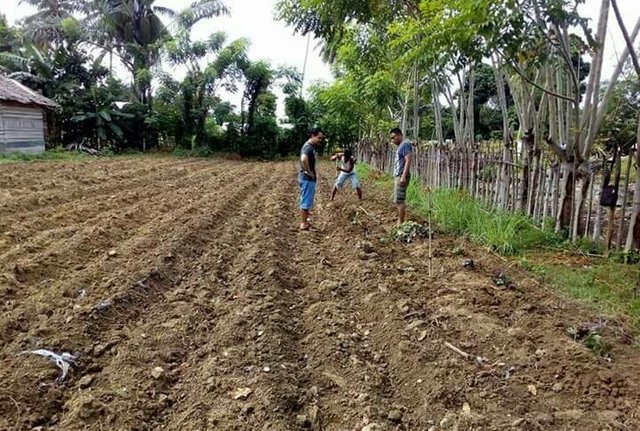
Soil conditions suitable for sweet potato cultivation are sandy loam soil, loose, many contain nutrients and have good drainage. The cultivation of sweet potatoes on dry soil and cracks will reduce plant immunity. Plants are susceptible to pests and diseases. Conversely, when planted in a muddy or wet place, tubers will be dwarf, high fiber content, tubers are rotten and the shape is bumpy.
The degree of acidity of the soil is ideal for sweet potato cultivation of about 5.5-7.5 pH. This plant grows well on moor or paddy fields. On moor land, cultivation of sweet potatoes suitable to be done at the end of the rainy season. As for the rice field is more suitable in the dry season.
The cultivation of sweet potatoes relatively does not require much fertilizer. Especially when planted in the former rice field. Before planting sweet potatoes, should the land be plowed or hoeed so loose. Then the shape of the bed as high as 30-40 cm. Create a width of 60-100 cm with a distance between beds 40-60 cm. The length of the bed follows the shape of the land.
For organic sweet potato cultivation, give basic fertilizer in the form of manure or compost. Good manure is a mixture of chicken and cow dung or goats that have been cooked. Combine the fertilizer at the time of making the bed with a dose of 20 tons per hectare.
Sweet potato planting
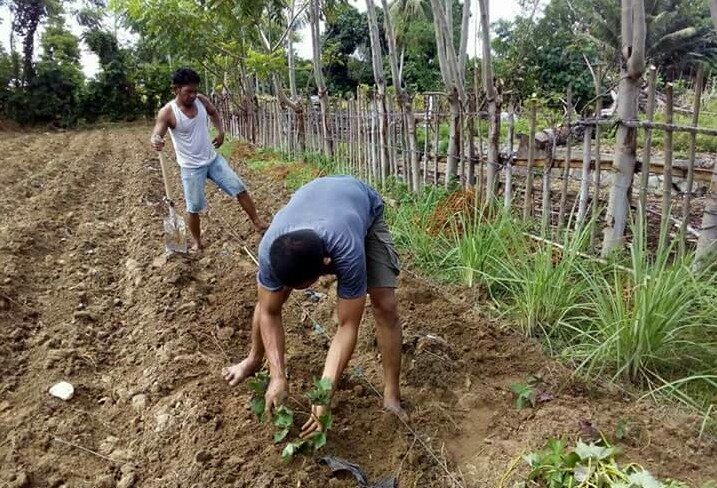
Sweet potatoes are grown by immersing 2/3 stem cuttings into the soil. In one bed there are two rows of plants. Distance between plants in a single line 30 cm and the distance between lines 40 cm. It takes about 36 thousand stems for an area of one hectare.
At the beginning of the growth try to keep the soil moisture. Do watering every morning and evening on newly planted cuttings. Watering can be stopped after the plant looks grown, which is characterized by the release of new leaves.
Maintenance
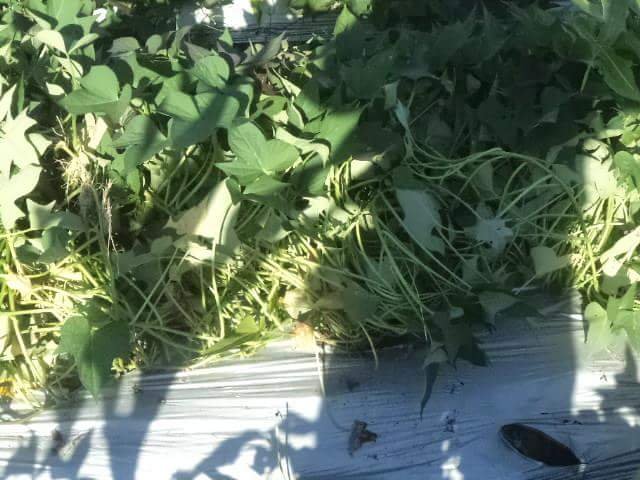
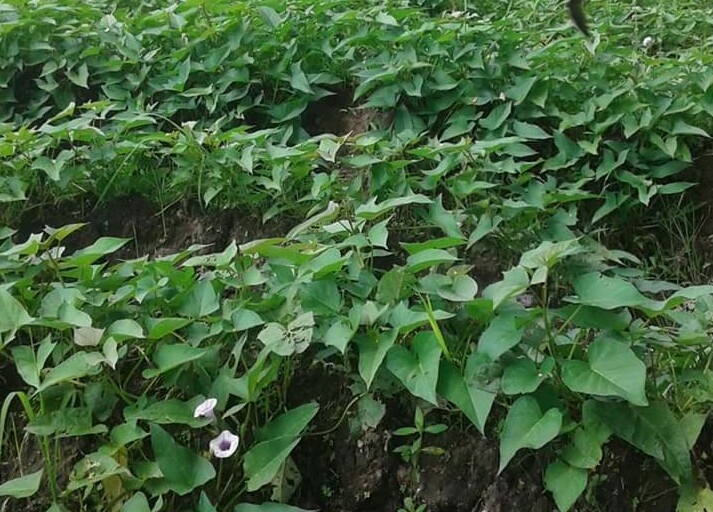
Sweet potato plants are drought resistant plants. The intensity of rain every two weeks is enough to provide water intake. So relatively does not require continuous watering.
After 2-3 weeks of planting, check the whole plant. If there are plants that fail to grow immediately embroidered with new plants. Stitching is done by removing dead plants and replacing them with new stem cuttings.
At the age of 4 weeks after planting, do the ground dismantling on the left and right of the plant, radius10 of the plant. This is so that plant roots do not spread everywhere so that the bulbs are concentrated in the planting path. This activity is done at once by weeding weeds.
At the age of 6-8 weeks after planting, the land is dismantled and then closed again while smoothing the roots that spread out of the path of planting. This root weeding activity is important because if it travels everywhere, the bulbs produced will not be too large. If the root is not curbed, it could be many tubers but the size is small.
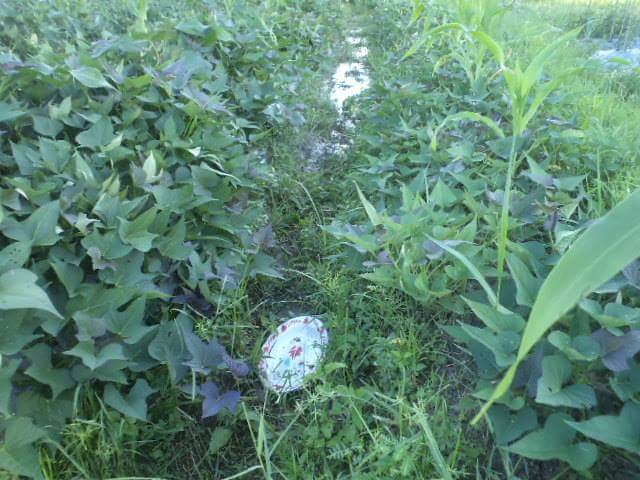
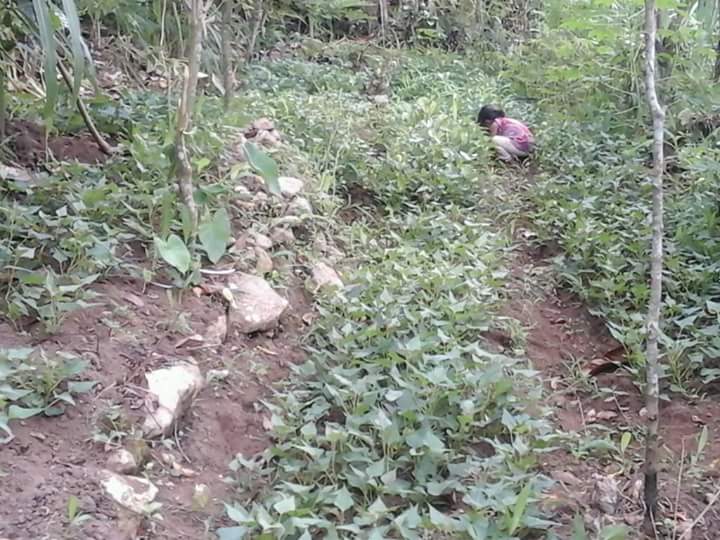
Harvesting of sweet potato cultivation
Harvesting of sweet potatoes can be done at the age of 3.5-4 months. Notice the weather before the harvest, or the age of the plant above 3 months. Tubers ready for harvest that suddenly hit by heavy rain will usually rot. This occurs in the cultivation of sweet potatoes done in the dry season. In the event that it immediately do the harvesting, maximum 7 days after rain.
Harvest is said to succeed if every one planted seedlings produce at least 1 kg of tubers. In general, sweet potato plants are good and not attacked by pests will produce tubers more than 25 tons per hectare. Even in sweet potatoes certain varieties such as kalasan can produce up to 30-40 tons per hectare.
Once harvested, sweet potatoes are washed and sorted then put in sacks and store in dry place before being sold to the market.
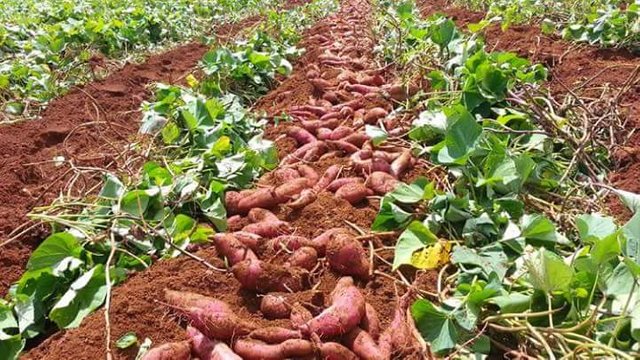


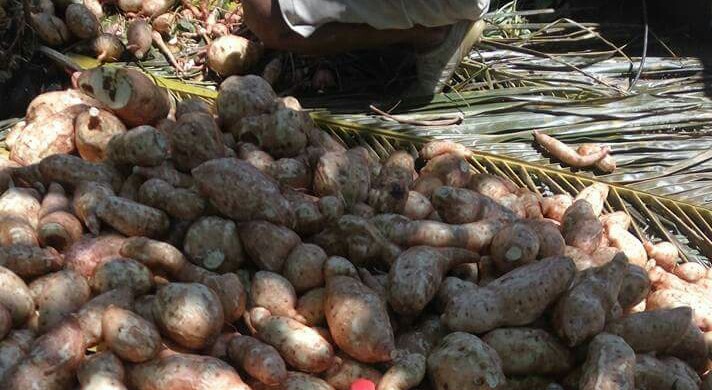
That is my posting on the cultivation and the way of harvesting sweet potato that I live in my uncle's house, a very memorable experience for me. Hopefully friends steemit happy with this post and make @ sirknight hope you are happy also I post this article in blog #calestialchallenge.
Congratulations activity and congratulations end for all, I end this post.
Thanks.
Don't forget to make upvote my account @ fauzanramazana.